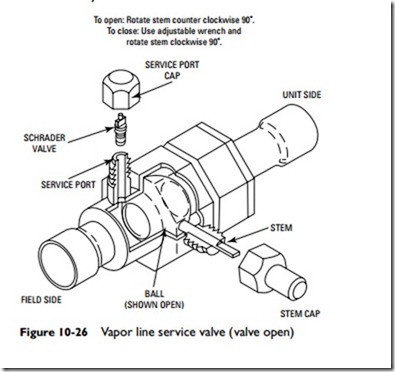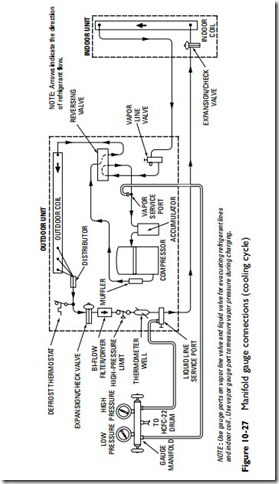Heat Pump Installation Recommendations
All of the installation recommendations included here are provided as a general guide. They do not supersede local, state, or national codes. Always consult local authorities having jurisdiction before installing the heat pump.
Note
Much more detailed installation instructions will be found in the installation manual for the specific heat pump make and model.
Always read and carefully follow the manufacturer’s installation instructions. Failure to do so could result in voiding the equipment warranty.
The following recommendations are offered as a checklist for installing a heat pump:
1. Install unit level or slightly slanted toward drain for proper condensation drainage.
2. Check unit wiring for compliance with wiring diagram and local codes and regulations.
3. Make sure all wiring connections are tight.
4. Ground unit by grounded waterproof conduit or with sepa- rate ground wire.
5. Check indoor and outdoor fan/blower for unobstructed and quiet movement.
6. Check condensation drain line for proper slope and drainage.
7. Fasten and seal all ducts and fittings with a suitable duct tape.
8. Check the refrigeration system for leaks after installation.
Note
Heat pump manufacturers require that the outdoor unit be matched with the indoor coils, line sets, and refrigerant control devices. Failure to do so will result in loss of warranty. Check the manufacturer’s specifications for the unit being installed.
Recommendations for installing the outdoor unit of the heat pump are as follows:
1. Install the outdoor unit on a concrete pad separate from the house foundation.
2. Do not locate the outdoor unit where its operation will dis- turb neighbors.
3. Do not locate the outdoor unit under a bedroom window.
4. Shelter the outdoor unit from prevailing cold winter winds.
5. Do not allow bushes or other obstructions to block the airflow to the unit. Provide for free air travel to and from the condenser.
6. Locate the unit far enough from the roof eaves to avoid falling snow and ice.
7. Locate the outdoor unit so that the lengths of copper refrigerant lines connecting to the indoor unit are minimized.
The following are recommendations for checking heat pump operation after installation is completed and the system is running:
1. Check the compressor starting characteristics and capabilities while the system is running.
2. Measure high- and low-side system pressures.
3. Check to make sure the system is operating in accordance with the heat pump manufacturer’s specifications.
4. Check the system for correct line and load voltage/amperage.
5. Listen for abnormal noise or unusual odors.
6. Measure outdoor dry-bulb temperature.
7. Measure indoor dry- and wet-bulb temperature.
8. Check for correct refrigerant charge.
Read the heat pump manufacturer’s installation manual and add any other recommendations to the preceding list. Not all heat pumps have the same installation requirements.

